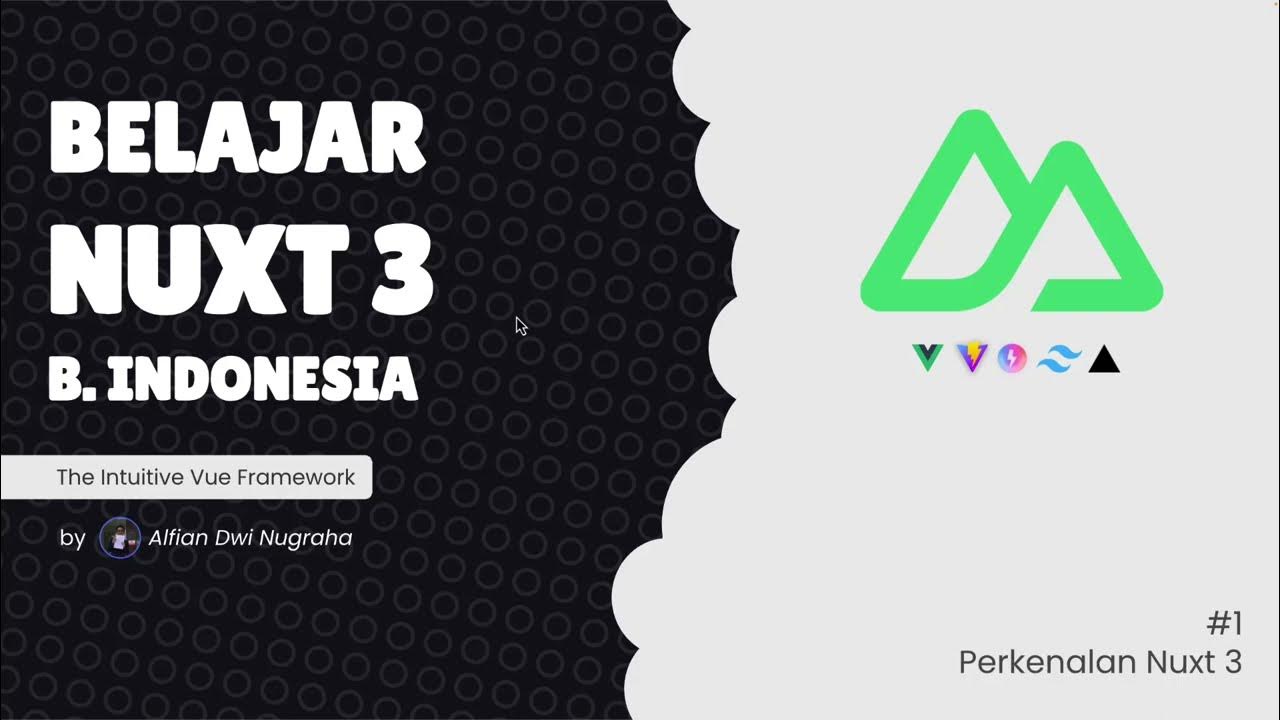#1 Berkenalan dengan Framework CodeIgniter 3
Summary
TLDRIn this video, the presenter introduces CodeIgniter, an open-source PHP web framework that simplifies web development. Focusing on CodeIgniter version 3, the video explains the concept of frameworks, highlighting key features like form validation, pagination, image manipulation, and session management. It also covers the advantages of using a framework, such as security, efficiency, and easier database management. The video provides an overview of the MVC architecture (Model-View-Controller), explaining how it organizes web development tasks. Additionally, it shares tips on prerequisites, including HTML, CSS, JavaScript, and PHP basics. Lastly, viewers are encouraged to explore official documentation and community resources for further learning.
Takeaways
- 😀 CodeIgniter is an open-source PHP framework that simplifies web development by providing pre-built tools and features.
- 😀 CodeIgniter follows the Model-View-Controller (MVC) architecture, helping separate logic, interface, and data handling in web applications.
- 😀 The framework offers built-in features like form validation, session management, email handling, and image manipulation.
- 😀 Using a framework like CodeIgniter speeds up development compared to writing native PHP code from scratch.
- 😀 CodeIgniter enhances security by offering built-in protections against common vulnerabilities like SQL injection.
- 😀 The framework is known for its small project file size, especially when compared to other frameworks like Laravel.
- 😀 CodeIgniter's documentation is comprehensive and available in both English and Indonesian, supporting developers at various levels.
- 😀 The framework is suitable for beginners due to its flexible coding standards, making it easier to adapt for those with basic PHP knowledge.
- 😀 CodeIgniter is a high-performance framework because it doesn't rely on template engines or object-relational mapping (ORM) tools, which can slow down processing.
- 😀 CodeIgniter supports multiple relational databases, including MySQL, PostgreSQL, Oracle, and MariaDB, offering flexibility in database choice.
- 😀 To get started with CodeIgniter, developers need to understand basic front-end technologies (HTML, CSS, JavaScript) and PHP, as well as the principles of object-oriented programming (OOP).
Q & A
What is CodeIgniter?
-CodeIgniter is an open-source PHP framework designed to help developers build web applications quickly and efficiently. It provides pre-built tools and libraries, which simplify common web development tasks like form validation, session management, and email handling.
What does MVC stand for in CodeIgniter, and how does it work?
-MVC stands for Model-View-Controller, which is an architectural pattern used in CodeIgniter. The 'Model' handles database operations, the 'View' manages the user interface, and the 'Controller' connects the Model and View, directing data flow between them.
Why should developers use a framework like CodeIgniter instead of coding a website from scratch?
-Using a framework like CodeIgniter speeds up development by providing ready-made tools, reducing the need for manual coding. It also offers better security, built-in features like form validation, pagination, and email handling, and follows best practices to ensure efficient and maintainable code.
What are some key features of CodeIgniter?
-CodeIgniter has several key features, including a small project size (around 2MB), flexible coding standards, complete documentation, active community support, fast performance, and the ability to work with various relational database management systems (RDBMS) like MySQL and PostgreSQL.
What is the significance of CodeIgniter's small project size?
-The small project size of CodeIgniter (around 2MB) makes it lightweight and fast, requiring fewer resources compared to other larger frameworks. This is especially important for developers looking to build efficient web applications without unnecessary overhead.
What is the advantage of using CodeIgniter's built-in session management?
-CodeIgniter's session management allows for persistent user sessions, meaning users don’t need to log in repeatedly when navigating through different pages or interacting with various features of a website, improving the user experience.
What is the role of documentation in CodeIgniter?
-CodeIgniter provides extensive documentation to assist developers in using the framework. The documentation is available both in English and Indonesian and includes guides on installation, configuration, and how to use various features such as email handling, form validation, and pagination.
What are the prerequisites for learning CodeIgniter?
-To learn CodeIgniter effectively, developers should have a basic understanding of HTML, CSS, JavaScript for front-end development, and PHP for the back-end. Additionally, understanding Object-Oriented Programming (OOP) is crucial since CodeIgniter follows the MVC architecture, which relies on OOP principles.
How does CodeIgniter handle database operations?
-CodeIgniter handles database operations through its 'Model' component, which is responsible for accessing and manipulating the database. Developers can perform operations like inserting, updating, deleting, and querying data directly through the model.
Why is CodeIgniter considered faster than other PHP frameworks?
-CodeIgniter is faster than many other PHP frameworks because it does not rely on template engines or ORM (Object-Relational Mapping) systems, which can slow down performance. This lightweight approach helps reduce overhead and speeds up application execution.
Outlines

This section is available to paid users only. Please upgrade to access this part.
Upgrade NowMindmap

This section is available to paid users only. Please upgrade to access this part.
Upgrade NowKeywords

This section is available to paid users only. Please upgrade to access this part.
Upgrade NowHighlights

This section is available to paid users only. Please upgrade to access this part.
Upgrade NowTranscripts

This section is available to paid users only. Please upgrade to access this part.
Upgrade NowBrowse More Related Video
5.0 / 5 (0 votes)





